Ruby Marchese
Year of birth: 1998.
Where do you live: Sydney, Australia.
Your education: Bachelor of Fine Arts (Properties and Objects) from the National Institute of Dramatic Arts (NIDA)… plus unofficial qualifications in shed projects from my Pa, and art wisdom from my mum.
Describe your art in three words: Instinctive, textural, whimsical.
Your discipline: At my French artist residency, they wrote ‘créatrice d’objets’ on the exhibition poster, meaning ‘creator of objects’, which is maybe more godly than I deserve, but I’ll take it.
Website | Instagram
Your work frequently contrasts natural forms with manmade materials, such as copper. How did you come to explore this juxtaposition in your artistic practice?
I’ve always liked the imperfections and unpredictability of natural forms. Things in nature form and grow instinctively, and I think instinct is how I approach art. When I was introduced to working with metal at NIDA, I loved the flexibility of being able to reheat and rework a material. It’s can also be quite instinctive to work with, but is very forgiving as a material, which is a stark contrast to nature in lots of ways.
Could you tell us about the inspiration behind your ‘Podlette’ series, particularly your reflections on the concepts of security and its impermanence in nature?
I’m quite a fan of Fiona Hall’s work ‘Paradisus Terestris’, in which she’s sculpted mundane sardine cans into beautifully detailed, refined objects that combine botanical motifs with human body parts; each is a little vignette that juxtaposes culture and nature that tells the viewer much about humanity. I was channelling this a lot in the creation of the Podlettes. I’ve always been preoccupied with creating containers or vignettes for my artworks, because I like working on a smaller scale, with focus on small, refined details that force the viewer to come in close to see. I think this creates a more intimate experience. I like the idea that some people will notice things others won’t in a small scale, contained work, and Hall achieves this admirably in her work.
The motif of cocoons and pods has always been something I’ve come back to because it combines my fondness for natural forms with my inclination for a container and effectively creates this idea of vignettes and stories. Like Fiona Hall, I also enjoy creating juxtapositions between natural and manmade, and relish in exploring the theme of security frequently in my work, which I believe to be one of the most manmade concepts we’ve created. As humans we like to seek a sense of security and surety, whether that be in work, home life or relationships. We strongly desire a feeling of comfort and reliability. And yet, if we look to natural symbols of security like pods and cocoons, they eventually break down and disintegrate, metaphorically suggesting security is just an illusion we’ve generated in society.
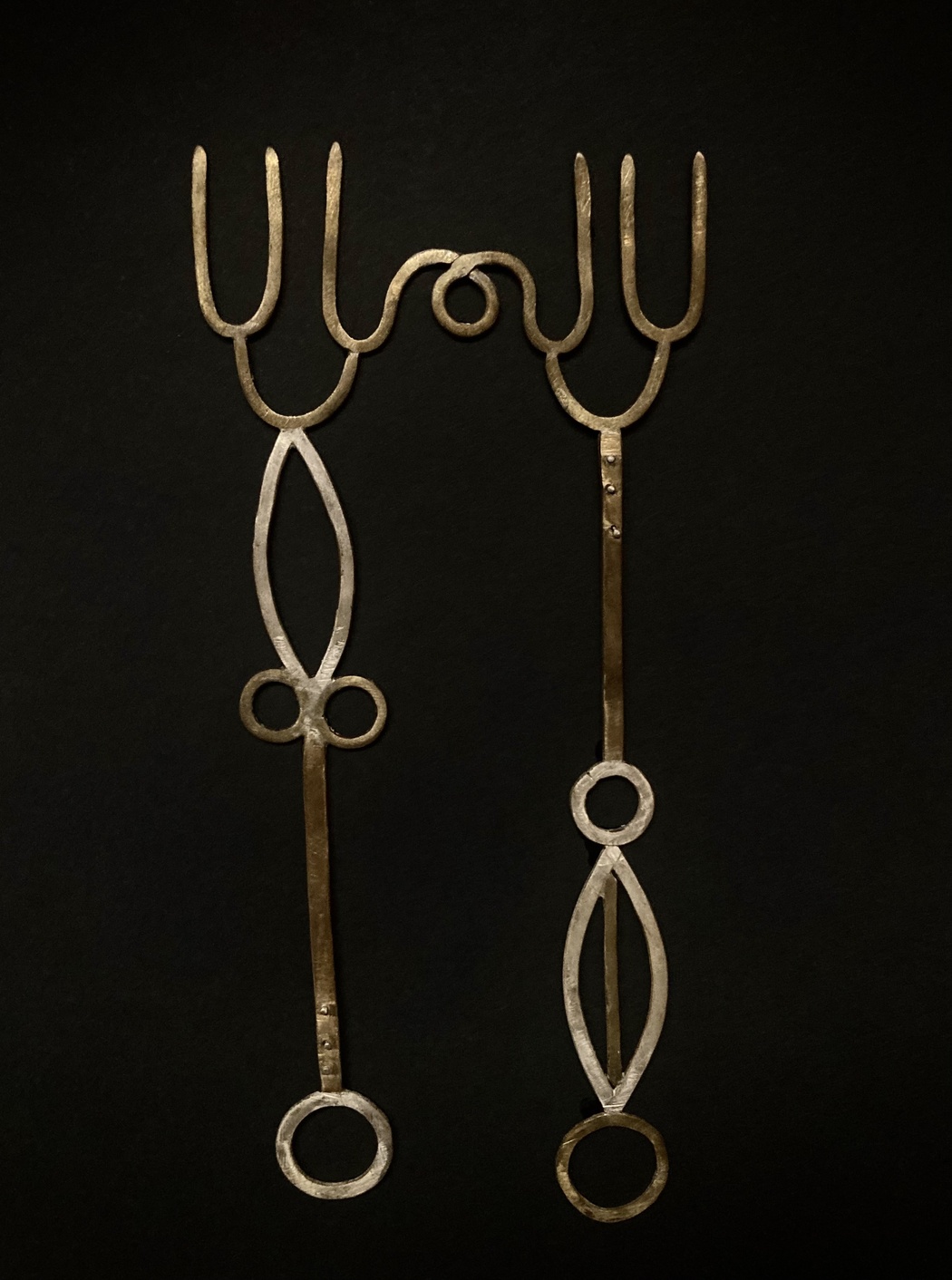 Ruby Marchese | Diner pour deux | 2022
Ruby Marchese | Diner pour deux | 2022
Many of your pieces, like ‘Dîner pour un’ and ‘Dîner pour deux,’ explore themes of human relationships and connection. What motivated you to create these specific works, and how do they reflect your personal experiences?
‘Dîner pour un’ and ‘Dîner pour deux’ were made during my artist residency in Sainte-Valière in France in 2022. They started out as being a mode in which for me to channel my love for Alexander Calder’s hammered wire work into my own art, and experiment with these techniques, but ended up encapsulating a lot more.
During the residency, I was in slight trepidation of the solo travel I was about to embark on for several weeks after Sainte-Valière; the solo dinners, the reliance on myself, the missing of company… when making a booking would I be asking ‘Dîner pour un’ or ‘Dîner pour deux’? There can be a bit of a taboo attached to doing things solo and I had a lot of people seem surprised when I said I would be on my own for the trip, but I found indulging in ‘’Dîner pour un’ to be quite liberating and empowering (it’s quite cathartic when there’s no one else to be mad at if I make a bad food decision or get lost).
Other aspects of post covid life also seeped into the artwork… ‘Dîner pour un’ is a sort of self-portrait of trying to be all the things at once when confronted with the isolation and loneliness that lots of people felt during lockdown. In contrast to the solo flatware, ‘Dîner pour deux’ was viewing how people could lose a bit of themselves in their relationships with others; become overly enmeshed, entwined and co-dependent. Either way, both make for rather unusable pieces of flatware.
Despite what seems to be a lot of navel gazing, my time at the residency was the most idyllic, dreamy, fulfilling experience. It was blissful to be amongst fellow creatives, making art, meeting locals, eating, and swimming in the river. I shared the residency with several other artists, and at dinner we would be vulnerable with stories, opinions, ideas, and conversation, all while our fellow eaters were armed with prongs and daggers, exposed in our state of consumption. As someone who was trained as a props and objects maker, I find regular objects interesting, so this work was also an ode to the tools of the everyday and the stories that go with them. It also served as an experimentation in transforming usually practical utensils into something ergonomically useless, that can instead be used as a conversation starter for the dinner table.
I hope Calder would approve.
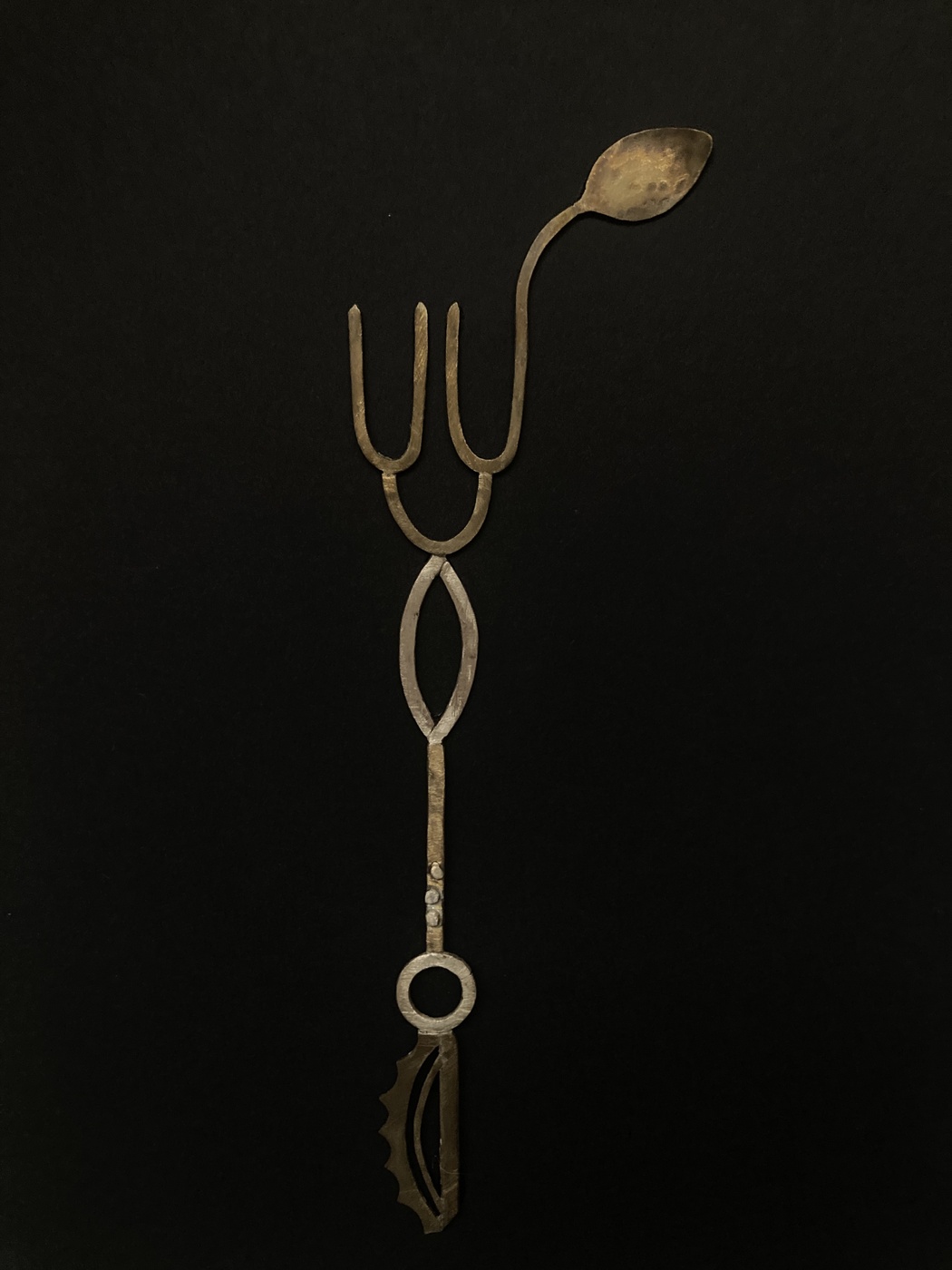 Ruby Marchese | Diner pour un | 2022
Ruby Marchese | Diner pour un | 2022
Your background in film and theatre prop making is quite fascinating. How does this experience influence your approach to your art, particularly in terms of craftsmanship and storytelling?
I think my experience as a prop maker opened me up to the range of materials and techniques available. Learning various skills at NIDA and throughout my career has unfurled a new world of possibilities in how to approach object making. When I first started NIDA I was interested in learning practical, useful skills that could be applied to make functional props and objects. Over time, I think I’ve come to invert that idea, and create artworks that challenge the idea of function, turning the useful into the useless, such as my Reservations series that I did in my artist residency. I think the storytelling element in film and theatre also means I’m continually aware of how it is within human nature to subconsciously imbue meaning and stories into mundane detritus. Earlier this year, I displayed an artwork at a group exhibition, and eavesdropped on individuals discussing the artwork and how they interpreted it. It was fascinating to hear how different people viewed a work and came up with a story for it that was so entirely different to what I’d intended. In some ways, I think an object could have very little deliberate meaning attached to it, and people would still be inclined to give it a story. Filmmaking and theatre entertain this a lot and I think artmaking can be very similar. We’re very drawn to narrative as a human race, and I like playing with this concept in the objects I make.
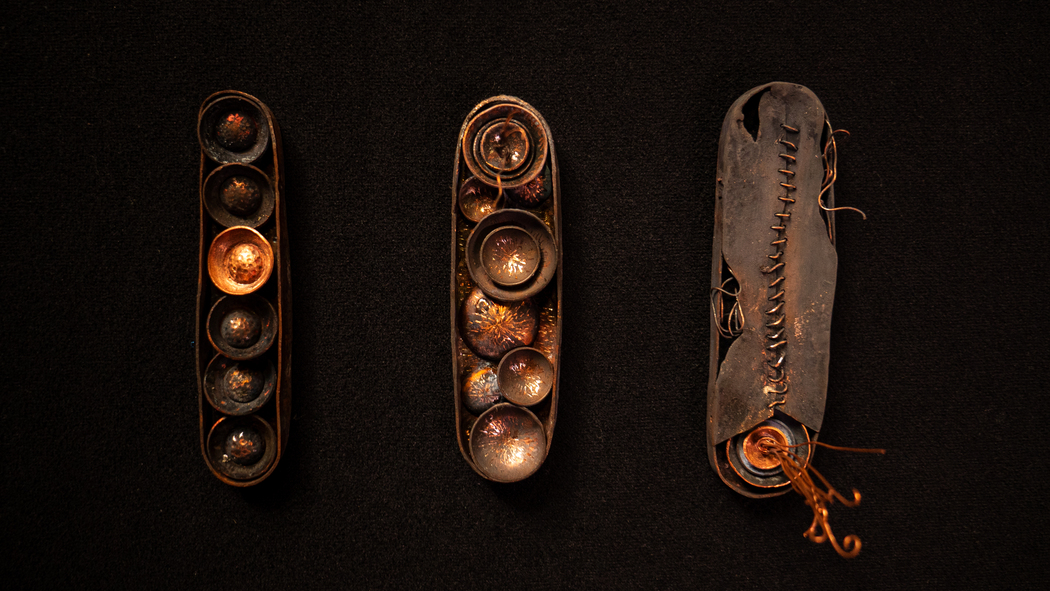 Ruby Marchese | Podlettes group | 2024
Ruby Marchese | Podlettes group | 2024
Copper is a material that naturally evolves and changes over time. How do you see the patina and aging process of your works contributing to their meaning?
I think much of my art process is about being instinctive and relinquishing a sense of control or perfectionism, which I sometimes find tricky to do in other aspects of life (I really love a plan).
I enjoy the juxtaposition of making a form that is so naturally delicate and easily broken, such as cocoons and pods, in something tough like metal, which requires high levels of heat to be shaped and manipulated. Despite this, copper oxidises over time and nature still wins. As humans, we have to relinquish control when it comes to nature, so I think using a material like copper that does patina and age, results in this false illusion of control and toughness that doesn’t really exist.
I also like the idea that my work will evolve and change over time with a patina, and therefore the story will change with it.
During your residency at Hôtel Sainte-Valière, how did your surroundings influence your creative process, particularly in the development of your Podlette series?
I think my surroundings of other people was the major influence during my residency. It was a beautiful, eclectic group of people, all coming together with a passion for travel and for art, and I became quickly enamoured with the life stories of the other artists. It was the conversation, storytelling and vulnerability that I think subconsciously influenced the Reservations series I created whilst there, and as a result, later informed how I approached making other works, like the Podlettes. Not to mention, the residency was in a small commune, surrounded by nature and vineyards away from the hustle and bustle of the city. The influence of the natural environment was very strong and reiterated my interest in organic forms. It’s hard to ignore the environment around you and not let it influence you, when you’re literally sipping a wine that was made from the grapes growing on the vines of the residency’s neighbour.
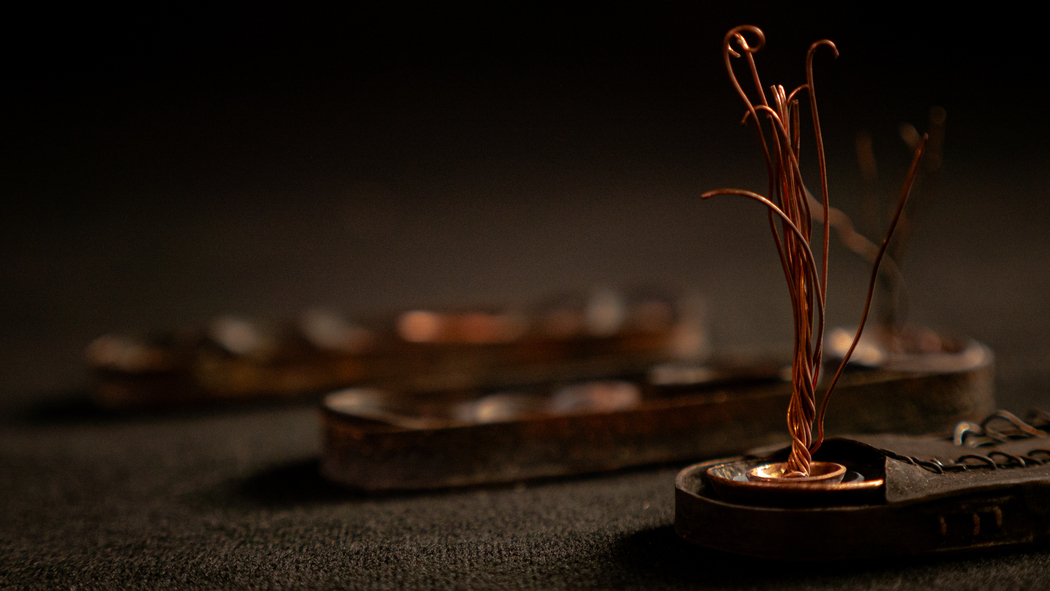 Ruby Marchese | Podlettes detail | 2024
Ruby Marchese | Podlettes detail | 2024
In your statement, you mention the use of stitching in one of the Podlettes. Could you explain its symbolism in relation to human attempts to maintain control over nature?
Stitching to me was the equivalent of a band-aid solution or sweeping something under the rug. When is stitching metal, or stitching a decaying cocoon ever going to practically fix anything? It’s the illusion of a solution, which harks back to this idea of human nature constantly desiring this concept of certainty and security, even when we can’t control it. It’s a bit confronting maybe to think this way, but it’s also liberating to realise that at the end of the day, it’s out of our hands.

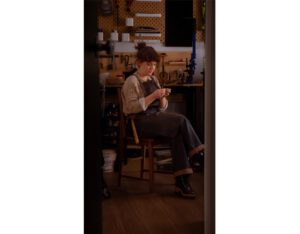
Leave a Reply